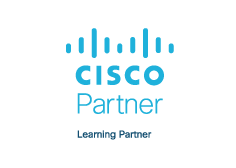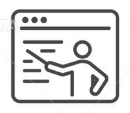トレーニング概要
| 受講日数 | 2日間 |
|---|---|
| 受講時間 | 09:30-16:30 |
| 受講形式 |
|
| 受講料(税込) | 0円 (コースコード:CI-COLLAB250) |
|---|---|
| 言語 | インストラクタ:
English テキスト: English ラボガイド: English |
トレーニング内容

The Cisco® Meeting Server Intermediate course is an instructor-led, lab-based, hands-on offering by Cisco Learning Services. This course is designed to establish a minimum level of knowledge and competency among Cisco Meeting Server resale and installation partners, which enables them to install, troubleshoot, and maintain a single server and single server split deployment of Cisco Meeting Servers.
ワンポイントアドバイス
受講対象者
- このコースの受講対象者は次の通りです。
-
-
This course is designed for technical professionals who need to know how to deploy Acano servers. The primary audience for this course includes:
System engineers
Technical support personnel
Channel partners, resellers
前提条件
- このコースを受講する前に受講者が習得しておく必要がある知識およびスキルは次のとおりです。
-
-
Cisco recommends that you have the following prerequisite knowledge and skills:
Cisco Meeting Server Apps Foundation, or Acano Certified Operator or equivalent knowledge
目的
- このコースを修了すると次のことができるようになります。
-
Installing a Cisco Meeting Server in a single combined deployment
Installing a Cisco Meeting Server in a single split deployment
Troubleshooting tools
Integrating Cisco Meeting Server with Cisco TelePresence® Video Communication Server (VCS), Cisco Unified Communications Manager and Microsoft Skype for Business
アウトライン
-
-
Outline: Cisco Meeting Server Intermediate (COLLAB250)
Module 1: Cisco Meeting Server Single Server Solution
Lesson 1: Describing the Cisco Meeting Server Solution
List the main capabilities a standalone Cisco Meeting Solution
List the main audio features of the Cisco Meeting solution
List the main video features of the Cisco Meeting solution
List the main web features of the Cisco Meeting solution
List the features of the Cisco Meeting Solution team Space
List the features of the Cisco Meeting Apps
Describe what the Cisco Meeting Solution can connect to for cross-platform communication
Lesson 2: Reviewing Authentication and Encryption
Describe symmetric and asymmetric encryption and how a Transport Layer Security (TLS) connection is set up
Describe certificates and how certificates are used to authenticate messages
Describe how commercial certificates are obtained
Lesson 3: Describing the Single Server Solution
Describe the basic functionality of the Call Bridge, XMPP Server, W eb Bridge, and Recorder components deployed on an Cisco Meeting Server
Describe the single server solution and the components required
Describe the call flow of a single server solution
Lesson 4: Preparing for Cisco Meeting Server Installation
Describe three ways to deploy Cisco Meeting Servers in an enterprise.
Describe the services prerequisites for the Cisco Meeting Server installation
Describe the specific Domain Name System (DNS) requirements for a Cisco Meeting Server
Describe the specific certificate requirements for a Cisco Meeting Server
Describe the licensing requirements for a Cisco Meeting Solution
Lesson 5: Installing Cisco Meeting Servers
Describe the Cisco Meeting Server 1K hardware platform and installation
Describe the VMware installation options
Configure the IP, DNS, and Network Time Protocol (NTP) address of the Cisco Meeting Server
Configure self-signed certificates and syslog server
Upgrade an Cisco Meeting Server
Lesson 6: Configuring the Web Admin
Describe the purpose of the Web Admin service
List three configurations that can be accessed on the Web Admin
Discuss the reason for using a port other than 443 to access the Web Admin with HTTPS
Lesson 7: Configuring the Call Bridge
Configure the Call Bridge
Configure Active Directory users from the Web Admin
Configure a CDR server from the Web Admin
Lesson 8: Configuring the Web Bridge
Describe the WebRTC App capabilities
Configure the Web Bridge
Configure the Call bridge to work with the Web Bridge
Firewall/NAT considerations on a single server deployment
Module 2: Troubleshooting Tools
Lesson 1: Using Troubleshooting Tools
Define the seven call detail record (CDR) record types and the information contained in each
Capture server configuration files (.json), crash log files, media and application .dmp files. Cisco Meeting App crash files, and Cisco Meeting App diagnostic logs
Employ the built-in commands to identify Cisco Meeting Server solution issues including PKI, DNS Lookup, Ping, and Service Status
Identify common issues for end users using the Cisco Meeting Server solution
Module 3: Firewall Traversal and Unified Communications Application Integration
Lesson 1: Deploying a TURN Server
Describe the STUN (Simple Traversal of UDP through NATs [Network Address Translation]) protocol
Describe the TURN (Traversal Using Relays Around NAT) protocol
Describe Interactive Connectivity Establishment (ICE)
Discuss the call flow of a split deployment (including with Expressway, VCS, Cisco Unified Communications Manager, and Microsoft Skype for Business components
Review the ports required for a split deployment
Configure the Cisco Meeting Server TURN server’s client IP address (public), and TURN credentials and realm
Configure the Call Bridge for TURN services
Lesson 2: Deploying Firewall and NAT Traversal
Describe the DNS Records required for a split deployment
Configure the internal server for W eb Admin, Call Bridge and XMPP
Configure the Web Bridge on the external server
Configure the Trunk and Load Balancer
Describe how syslogs can be used to confirm connectivity between servers for a split server deployment.
Lesson 3: Integrating with UC Platforms
Deploying firewall and NAT
Discuss the call flow of a Unified Communications integrated server solution
Describe how the Cisco Meeting Server Call Bridge is reached from Cisco VCS and Cisco Unified Communications Manager
Create outbound call rules from the Cisco Meeting Server Call Bridge to the Cisco VCS, Cisco Unified Communications Manager, and Microsoft Skype for Business
Create inbound call-matching rules on the Cisco Meeting Server Call Bridge
Describe the support for Cisco Meeting Server in Cisco TelePresence Management Suite
Describe how Cisco Meeting Server can be deployed as an Ad Hoc conference resource in Cisco Unified Communications Manager.
試験や資格との関連
ご注意・ご連絡事項
-
本トレーニングコースには、申し込み手続き期限、キャンセル、日程変更に関する扱いが定められています。
- 申し込み手続き期限: コース開始日の45日前までとします。期限後のお申し込みを検討されている場合は 「お問い合わせ」(https://www.topout.co.jp/inquiry) からご相談ください。
- キャンセル: コース開始日の44日前以降のお申し出の場合は、代金を全額お支払いいただきます。
- 日程変更: コース開始日の44日前以降のお申し出は、受付いたしかねます。
当該日が当社休業日にあたる場合は、直前の営業日とします。
-
- 受講者変更:コース開始日の6営業日前以降のお申し出は、受付いたしかねます。
-
トレーニング開催日時
コースの日程が決定次第、ご案内いたします。
詳しくはお問い合わせください。
サポートコンテンツ
-
シスコ認定トレーニングで使用する教材の電子化について
-
オンライントレーニング(Cisco)受講ガイドライン
-
トレーニング形式については
こちら -
お申し込みフローについては
こちら



